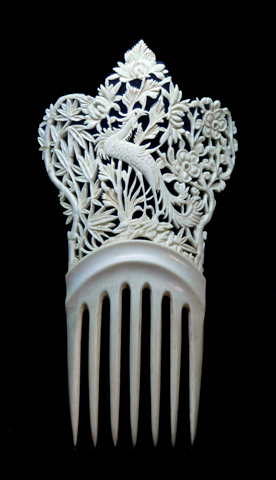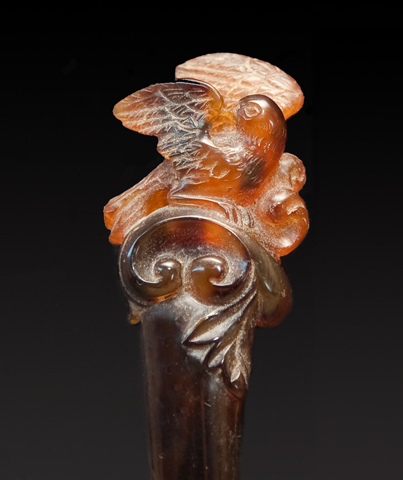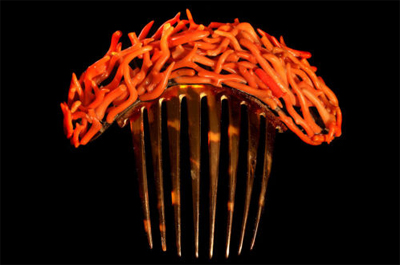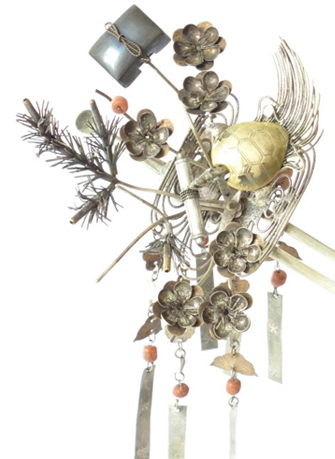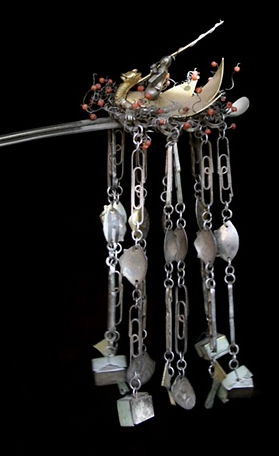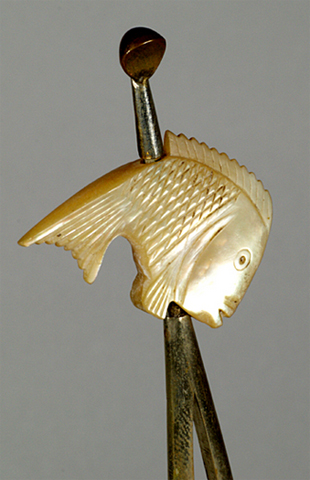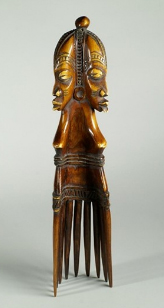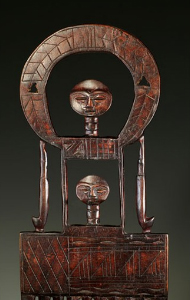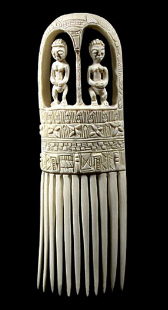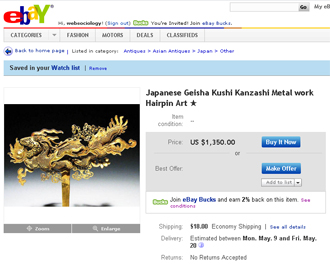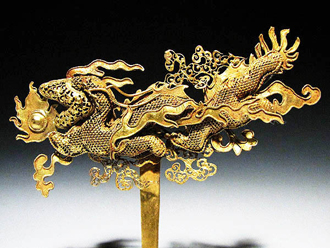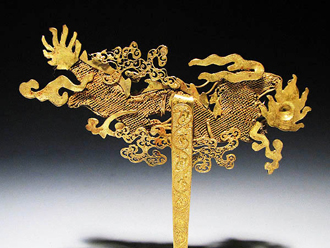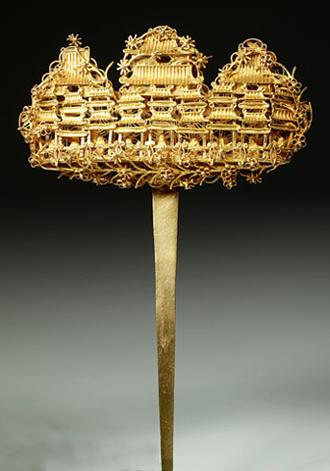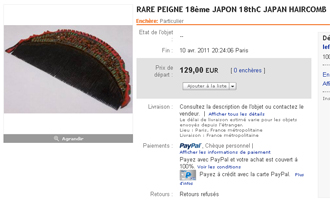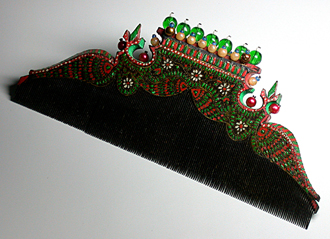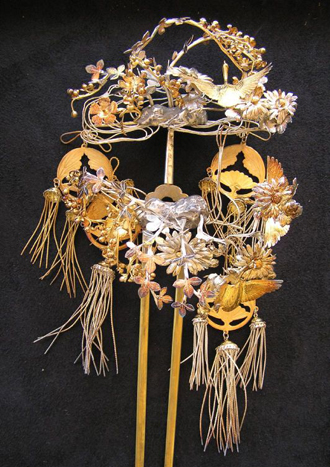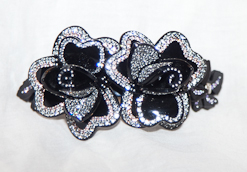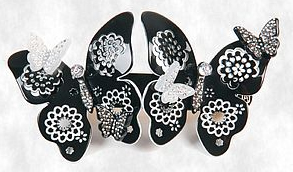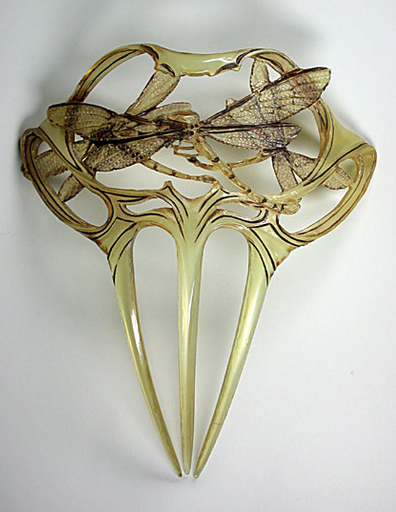There is a lovely silver framed Edo set selling on Ebay for $1250. Using studs to attach the floral decoration to the kushi’s silver frame, the artist punctuates it with coral beads. The dealer dates the set as 1900 – 1920.
Here is why I am doubting his dates.
1. The size of the silver frame in relation to the comb looks Edo to me.
2. The comb itself is tortoiseshell, while the frame is silver.
3. The tortoiseshell comb has bug bites, a sign of age.
4. The floral design is attached to the comb instead of being cut out of one piece.
5. The cutting in the middle of the kogai stick is a line in the middle of two hearts, facing inward.
6. The kogai stick has the same decorative theme as the kushi. In modern pieces that mimic the Edo era, the kushi is usually accompanied by an oversized kanzashi, not a kogai stick.
7. Here is another silver Edo set that sold on ebay. In fact, I think it was my first blog post!
The full set selling on Ebay:
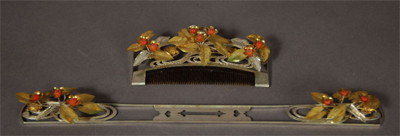
The kushi front and back, where you can see the floral design is attached.
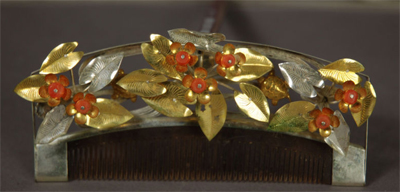
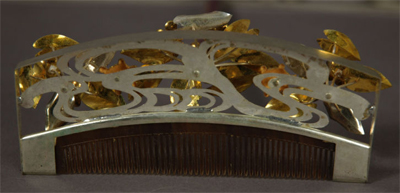
A similar set from Miriam Slater’s collection. Notice the cutting of the line in between two hearts on the kogai.
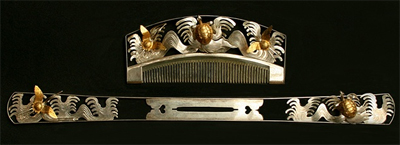
A piece from my collection: this is Taisho. The silver design, comb and theme of flowers in water, are all carved out of one piece of silver, and adorned with gilded brass and black for color. My set is accompanied by a kanzashi, not a kogai.
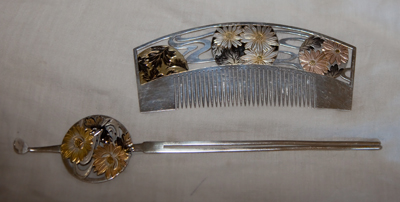
What does everyone think? Am I seeing this comb set correctly? Agreements / Disagreements welcome.
